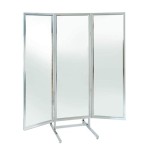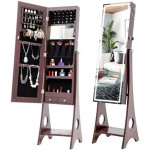How to Mirror iPhone to Mac Offline
Mirroring an iPhone screen to a Mac can be highly beneficial for various purposes, from presentations and demonstrations to troubleshooting and entertainment. While many mirroring methods rely on a network connection, offline mirroring offers distinct advantages in environments with limited or no Wi-Fi access. This article explores various techniques for mirroring an iPhone to a Mac without an internet connection.
One reliable method for offline mirroring involves using a Lightning Digital AV Adapter and an HDMI cable. Apple's Lightning Digital AV Adapter allows for direct connection between an iPhone's Lightning port and an HDMI input on the Mac. Users will also require a Mac equipped with an HDMI port or a compatible HDMI adapter. This setup bypasses the need for any network infrastructure, providing stable and low-latency mirroring ideal for situations where a reliable connection is paramount.
To mirror using this method, first connect the Lightning Digital AV Adapter to the iPhone's Lightning port. Next, connect one end of the HDMI cable to the adapter and the other end to the HDMI port on the Mac or a connected HDMI adapter. The Mac should then automatically detect the iPhone as an external display and mirror its content. It is important to note that certain Mac models may require a separate USB-C to HDMI adapter or multiport adapter for this functionality.
Another approach to offline mirroring involves utilizing QuickTime Player, a pre-installed application on macOS. QuickTime Player offers screen recording capabilities that can be extended to capture the iPhone's display. This method provides a straightforward solution without needing additional hardware beyond a Lightning to USB cable.
To utilize this method, connect the iPhone to the Mac using a Lightning to USB cable. Open QuickTime Player and navigate to File > New Movie Recording. A recording window will appear. Next to the record button, a dropdown arrow will allow users to select the iPhone as the camera input source and microphone source if audio mirroring is required. Upon selection, the iPhone’s screen content will be mirrored within the QuickTime Player window. This method offers recording capabilities, allowing users to capture the mirrored content for later review or sharing.
Certain third-party applications available for macOS also offer offline mirroring functionality. These applications can provide additional features and customization options beyond the standard methods. Researching and comparing these options can be beneficial for users who require specific functionalities or prefer a different user interface.
When exploring third-party applications, it's essential to consider factors such as compatibility with specific iPhone and macOS versions, supported features, and user reviews. Some applications may offer advanced features like adjusting the mirrored resolution, recording with specific codecs, or adding annotations to the mirrored content. Trial versions of these applications are often available, allowing users to test the software before purchasing a license.
While hardware-based mirroring with a Lightning Digital AV Adapter and HDMI cable offers the most direct and latency-free connection, QuickTime Player provides a readily available software solution without the need for additional hardware purchases. Third-party applications offer a wider range of features and customization options but may require additional investment. Selecting the most suitable method depends on individual needs and available resources.
Regardless of the chosen mirroring method, ensuring both the iPhone and Mac are updated to their latest respective software versions is crucial. Software updates frequently address compatibility issues and enhance performance, resulting in a smoother and more reliable mirroring experience. Checking for updates before initiating the mirroring process is recommended.
Troubleshooting common mirroring issues may involve verifying cable connections, restarting devices, or checking software compatibility. If issues persist, consulting official Apple documentation or support resources can provide further assistance. Understanding the specific requirements and limitations of each mirroring method can help preempt potential challenges and ensure a successful mirroring experience.
Choosing the most suitable method involves consideration of factors such as required latency, budget, and desired features. The Lightning Digital AV Adapter and HDMI cable method prioritize low latency, making it ideal for activities where real-time responsiveness is critical. QuickTime Player offers a convenient and cost-effective solution readily available on macOS systems. Evaluating individual needs and available resources helps determine the most effective offline mirroring approach for specific applications.

How To Mirror Iphone Mac Without Wi Fi

How To Mirror Iphone Mac Wirelessly Full Guide

How To Mirror Iphone Mac Without Wi Fi

Use Airplay To Stream Or Mirror The Screen Of Your Iphone Apple Support

How To Mirror Iphone Screen Mac Quick Easy Wireless 2024

How To Mirror Iphone Mac Wirelessly Full Guide

How To Mirror Your Iphone Screen On A Computer Pcmag

How To Mirror Iphone Screen Mac Quick Easy Wireless 2024

How To Mirror Iphone With Ios 17 On Windows Pc Mac

How To Mirror Iphone Mac Without Wi Fi








